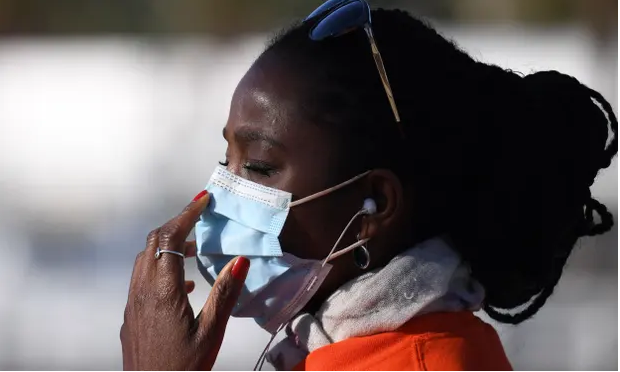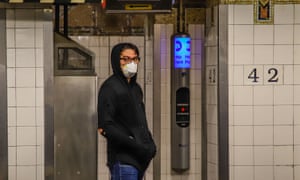
or several weeks, health professionals, political leaders and even the World Health Organization have told the public that people do not need to use protective face masks unless they are sick or caring for someone with Covid-19.
Experts agree that medical-grade protective gear, such as N95 respirators, should be reserved for health workers, but officials from the Centers for Disease Control and Prevention in the US said on Monday they were reviewing their recommendations after new data showed nearly a quarter of those infected did not show symptoms, meaning they were infectious perhaps without realizing it.
Some countries, such as Austria, have made mask-wearing in supermarkets compulsory. Local leaders in the United States have begun encouraging – and in some cases mandating – that people cover their faces in public. We asked four experts for their advice.
How effective are face masks at stopping transmission?
Jeremy Howard The primary transmission [of coronavirus] is now known to be droplet-based, and we now know that that transmission largely occurs in the first seven days after infection, when people are largely asymptomatic. So that means that if you’re highly infectious, you probably won’t know it. So we should all assume that we are potentially lethal to people around us. The way we are potentially lethal to people around us is when we speak: that’s when these micro droplets get ejected up to six feet.
If you’re speaking, and you put a couple of layers of cotton or paper towel in front of your mouth, the droplets go into that and not into the face of the person you’re speaking to. That’s why masks dramatically help reduce the spread of the virus.
Jessica Justman It’s like a pitcher and a catcher at a baseball game. And the masks are all about trying to keep the pitcher from pitching the ball. There are more pitchers than we realized, and if we need to all wear masks in order to keep the pitchers from pitching their balls, then so be it.
Are masks more effective at protecting the wearer? Or everyone else?
Howard There is some extra protection for the wearer, but it is imperfect. It’s good to think about wearing a mask as protecting your community and asking your community to do the same for you.
Why have the WHO and CDC been reluctant to recommend masks for the general public?
Howard They were trying to protect frontline healthcare workers from running out of N95 respirators.
Ben Cowling If the WHO were to consider modifying their current recommendations, they might go in the direction of saying: “Save the surgical masks for the healthcare settings, and let’s look into using homemade masks and cloth masks in the community to reduce transmission.”
Are you concerned that people might use masks incorrectly, and that could make them less effective or give a false sense of security?
Saskia Popescu I worry about someone who is sick wearing a mask, but then touching their mouth underneath, not washing their hands, and touching surfaces. I worry about the false sense of security, about people not wearing them appropriately, or cleaning them appropriately. So there are a lot of other pieces to [stopping transmission] that extend beyond the mask.

Of course, we want sick people to be wearing the mask, but if you tell everyone to go wear a mask right now, I think that could put a run on supplies.
Howard When we found that seatbelts keep people safe, we required people wear them. When we realized that condoms can protect you from disease, we told people to avoid unprotected sex. If there’s something that could dramatically slash the transmission of disease, and our response is to tell people not to use it because they might do it wrong, that’s incompatible with any other kind of policy decisions we make.
Do you have advice for individuals making face masks at home?
Howard Cambridge University has shown that a couple of layers of cotton, like a T-shirt, would work great. A Shenzhen hospital scientist showed a couple of layers of paper towel worked great. We have a DIY recipe on our site that actually shows a combination of those two things requiring no tools other than a pair of scissors.

Cowling Cover the mouth, the nose, and the chin. Don’t touch the front of the mask because it might be contaminated.
Is it important to form a seal? Would that pose a problem for people with beards?
Howard: No, not at all. A seal is something you need for aerosol-generating procedures. So unless you’re planning on intubating patients at your own home or during your shopping trip, that’s not an issue. Remember, the main thing we’re doing is protecting those around you.
Is there any way to disaggregate the widespread use of face masks from other measures – like social distancing – to understand how effective they are?
Howard: We absolutely can’t. There are four measures – rigorous testing, contact tracing, quarantine of potentially infected persons and universal mask-wearing – that represent a known good recipe. We don’t know exactly which combination of those things works and how important each one is. We’ve just got to do what works.
- Ben Cowling is a professor of epidemiology and co-director of the WHO Collaborating Centre for Infectious Disease Epidemiology and Control at the University of Hong Kong
- Jessica Justman is a professor and attending physician in the division of infectious diseases at the Columbia University Irving Medical Center
- Jeremy Howard is a distinguished research scientist at the University of San Francisco and founder of the #Masks4All campaign
- Saskia Popescu is a Phoenix-based epidemiologist


Be the first to comment